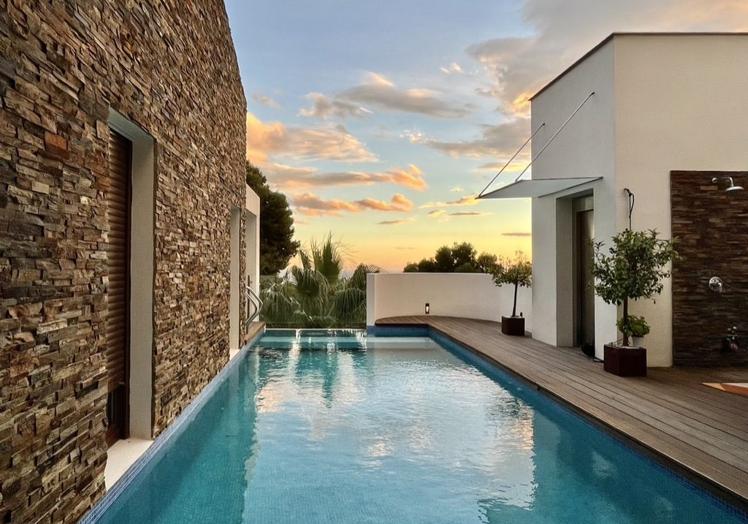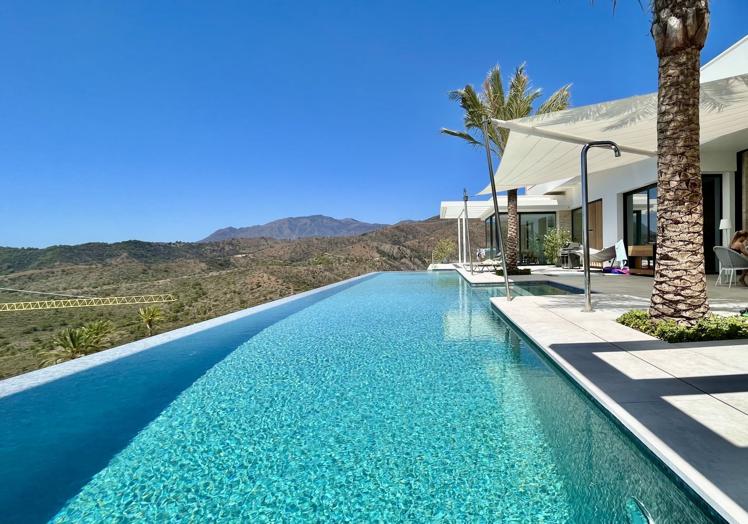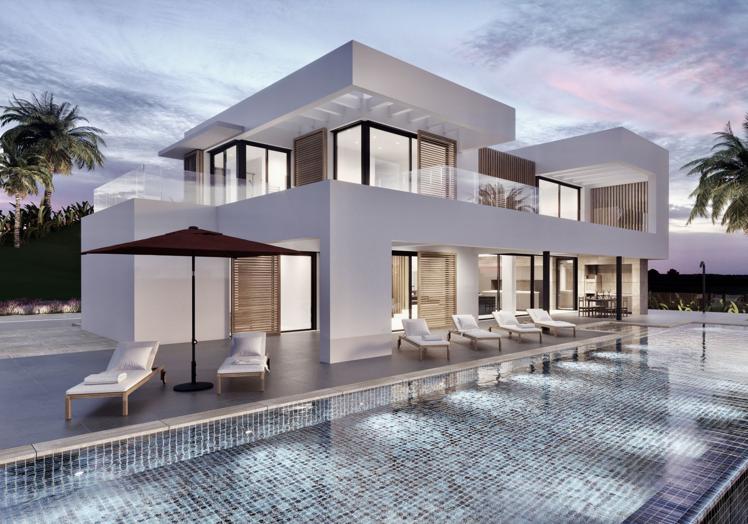

Sections
Highlight

SUR in English
Thursday, 27 March 2025, 09:49
If we are to believe the official data, there are 290,542 pools in Andalusia (as of 2025). An incredible number in the dry south of Spain.
If you are interested in building a pool, here are some tips from an architect.
A pool is first and foremost intended for cooling off in the hot summer in southern Spain. The refreshing dip is also great fun for the little ones and allows children to learn to swim at an early age. Don't forget, according to Swim England, nearly 30% of six-ten year olds in the UK cannot swim.
But a pool is also eye-catching and adds value to a home, usually integrated into a spacious terrace area. Who doesn't remember the last summer party at a friend's house in the evening light around the pool? Remember the turquoise illuminated water, with a gentle swell from the evening sea breeze and the crickets which can be heard from the verdant garden further behind. It's summer and we enjoy being outdoors with the smells of a Mediterranean garden and smoke from the barbecue fire.

For the perfect swimming pool, you need space, a levelled surface, nice lighting features and a less deep area for the children.
A pool should be close to the house, as it will quickly become the centre of your home. We live outside in Andalusia for what feels like 10 months a year, water is extremely decorative and the outdoor life is one of the reason people move to the Costa del Sol. When planning a dream home, the pool should be included in the design. It serves as the centrepiece, as the illuminated pool water and the turquoise marbled tiles give a unique lighting effect. I recommend building pools on the ground floor, close enough to kitchen and the terrace to be seen at all times, but far enough away to avoid splashing water. The pool should always be visible from as many angles of the house as possible and be accompanied by a large outdoor shower (ideally with a WC), positioned out of sight.
Ideally, a pool extends along the length of the house and should be visible from as many rooms in the house as possible. The infinity effect is often used on slopes, behind the pool, giving the appearance that the pool blends into the horizon or even the view of the sea. A usable pool should be rectangular and at least 10 metres long. Organic shapes (formerly known as ‘kidneys’ or ‘flowers’) can lend a certain lightness to the austere lines of the house façade.

There are plenty of prefabricated polypropylene or PVC pools that can be installed in a depression in the garden filled with a sand/cement mixture. However, most pools in Andalusia are made from shotcrete. For this purpose, formwork walls are tiled, the reinforcement bars are attached to them, including the respective installation parts (injectors, drain, lighting, skimmer, etc.), and then concreted in one piece. A levelling layer of cement plaster and several layers of sealing plaster are then applied, followed by the covering, either paint or usually mosaic tiles. When building a pool, it is important to check that it is watertight before the tiles are laid. As architects, we commission an independent testing institute to certify that the pool is watertight (Certificado de estanqeuidad). What many owners don't realise is that most pools leak water, some even significantly. This is often not noticed, as the automatic filling system makes it difficult to detect. As building experts, we inspect pools time and again and the only option for renovation is usually a total repair, as it is not easy to determine where the water loss is occurring in a finished pool.
Pool heating is recommendable, even in supposedly hot Spain; the spring months in particular are surprisingly cool, with pools only reaching a comfortable swimming temperature (28ºC) at the end of May /mid. June. With a modern installation, the pool water can be heated with the heat pump of the house’s heating system, which supplies your underfloor heating in winter and heats the pool water in the transitional periods. Ideally the system should be combined with a solar PV system, which produces a lot of energy during these transitional periods (especially in spring) and during this period energy is not as needed by the house-heating system. This surplus energy can be used to heat the pool.

However, a heated pool should be covered with a pool cover to minimise heat loss at night. A heated pool without a cover is like a heated house without windows, the energy is lost during the night.
Most pools are operated using chlorine tabs, which are available at any DIY store; a tablet is added to the skimmer once a week. A very simple system is salt electrolysis, with which the water is salted and the salt is divided into natural chlorine (CL) and sodium (NA) by electrolysis. Natural chlorine is much less aggressive than chemically produced chlorine, and a salt electrolysis treatment costs around €3,000, depending on the amount of water. Larger pools (hotels) have an automated chlorination / pH control, which constantly measures the value and pumps liquid chlorine / pH regulator into the circulating water. In indoor pools, we like to use ozone treatment systems that work well in combination with infrared disinfection.
For a standard pool with 5x10m dimensions, you should calculate around 30,000 € including the lighting and salt electrolysis system. A modern pool cover costs approximately 20,000 € and extending your existing house heating for pool use as well should be another 3,000 €. If the pool heating is independent, 8,000 €
Any question regarding the ideal pool, don’t hesitate to call us!
Enjoy the summer.
Esta funcionalidad es exclusiva para registrados.
Reporta un error en esta noticia

Debido a un error no hemos podido dar de alta tu suscripción.
Por favor, ponte en contacto con Atención al Cliente.

¡Bienvenido a SURINENGLISH!

Tu suscripción con Google se ha realizado correctamente, pero ya tenías otra suscripción activa en SURINENGLISH.
Déjanos tus datos y nos pondremos en contacto contigo para analizar tu caso

¡Tu suscripción con Google se ha realizado correctamente!
La compra se ha asociado al siguiente email
Comentar es una ventaja exclusiva para registrados
¿Ya eres registrado?
Inicia sesiónNecesitas ser suscriptor para poder votar.